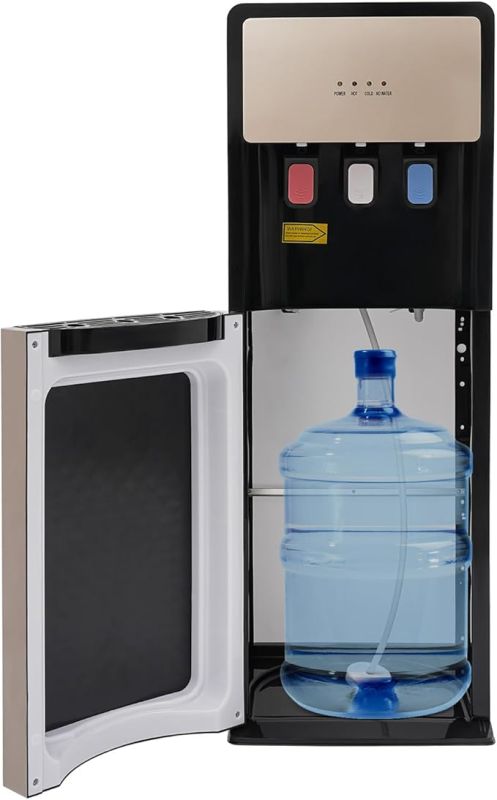Understanding the Main Characteristics of a Wi-Fi Router

- Wi-Fi Standards
- Wi-Fi 4 (802.11n)
- Wi-Fi 5 (802.11ac)
- Wi-Fi 6 (802.11ax)
- Wi-Fi 6E
- Dual-Band vs. Tri-Band
- Single-Band
- Dual-Band
- Tri-Band
- Speed and Performance
- Theoretical Maximum Speed
- Real-World Speed
- Range and Coverage
- Antenna Type
- Beamforming Technology
- Mesh Wi-Fi Systems
- Security Features
- Encryption Standards
- Firewall
- Guest Network
- Ports and Connectivity
- Ethernet Ports
- USB Ports
- WAN Port
- Quality of Service (QoS)
- Importance:
- MU-MIMO and OFDMA
- MU-MIMO (Multi-User, Multiple Input, Multiple Output)
- OFDMA (Orthogonal Frequency Division Multiple Access)
- Ease of Setup and Management
- Mobile Apps
- Web Interface
- Voice Control
- Brand and Support
- Popular Brands:
- Customer Support:
- Conclusion
A Wi-Fi router is an essential device in modern homes and offices, enabling wireless internet connectivity for multiple devices. With the increasing demand for high-speed internet and seamless connectivity, choosing the right Wi-Fi router has become more important than ever. This guide will walk you through the main characteristics of a Wi-Fi router, helping you make an informed decision when selecting one for your needs.
Wi-Fi Standards
Wi-Fi standards determine the speed, range, and compatibility of your router. The most common standards include:
Wi-Fi 4 (802.11n)
-
Speed: Up to 600 Mbps.
-
Frequency: 2.4 GHz and 5 GHz.
-
Best For: Basic internet usage, small homes.
Wi-Fi 5 (802.11ac)
-
Speed: Up to 3.5 Gbps.
-
Frequency: 5 GHz.
-
Best For: Streaming, gaming, medium to large homes.
Wi-Fi 6 (802.11ax)
-
Speed: Up to 9.6 Gbps.
-
Frequency: 2.4 GHz and 5 GHz.
-
Best For: High-performance needs, multiple devices, large homes.
Wi-Fi 6E
-
Speed: Up to 9.6 Gbps.
-
Frequency: 2.4 GHz, 5 GHz, and 6 GHz.
-
Best For: Cutting-edge performance, minimal interference.
Dual-Band vs. Tri-Band
Routers can operate on different frequency bands, affecting speed and performance.
Single-Band
-
Frequency: 2.4 GHz.
-
Pros: Better range, penetrates walls well.
-
Cons: Slower speeds, more interference.
Dual-Band
-
Frequencies: 2.4 GHz and 5 GHz.
-
Pros: Faster speeds on 5 GHz, less interference.
-
Cons: Slightly higher cost.
Tri-Band
-
Frequencies: One 2.4 GHz band and two 5 GHz bands.
-
Pros: Optimal performance for multiple devices, high-speed connections.
-
Cons: Higher cost.
Speed and Performance
The speed of a Wi-Fi router is measured in megabits per second (Mbps) or gigabits per second (Gbps). Key factors include:
Theoretical Maximum Speed
-
Importance: Indicates the highest possible speed under ideal conditions.
-
Example: A router rated at 1200 Mbps can theoretically deliver up to 1200 Mbps.
Real-World Speed
-
Importance: Actual speed experienced by users, often lower due to interference, distance, and device limitations.
Range and Coverage
The range of a Wi-Fi router determines how far the signal can reach. Factors affecting range include:
Antenna Type
-
Internal Antennas: Sleek design, moderate range.
-
External Antennas: Adjustable for better coverage, higher range.
Beamforming Technology
-
Importance: Directs Wi-Fi signals towards connected devices, improving range and performance.
Mesh Wi-Fi Systems
-
Importance: Multiple nodes work together to provide seamless coverage across large areas.
Security Features
Security is crucial to protect your network from unauthorized access and cyber threats.
Encryption Standards
-
WPA3: Latest and most secure encryption standard.
-
WPA2: Widely used, still secure but less advanced than WPA3.
Firewall
-
Importance: Protects your network from external attacks.
Guest Network
-
Importance: Allows visitors to connect to the internet without accessing your main network.
Ports and Connectivity
Routers come with various ports for wired connections and additional features.
Ethernet Ports
-
Importance: For wired connections to devices like computers, gaming consoles, and smart TVs.
-
Example: Gigabit Ethernet ports for high-speed wired connections.
USB Ports
-
Importance: For connecting external storage devices or printers.
WAN Port
-
Importance: Connects the router to the modem for internet access.
Quality of Service (QoS)
QoS allows you to prioritize certain types of traffic for better performance.
Importance:
-
Streaming: Prioritize video streaming for buffer-free viewing.
-
Gaming: Prioritize gaming traffic for low latency.
-
VoIP: Prioritize voice calls for clear communication.
MU-MIMO and OFDMA
Advanced technologies that improve performance in multi-device environments.
MU-MIMO (Multi-User, Multiple Input, Multiple Output)
-
Importance: Allows the router to communicate with multiple devices simultaneously, improving efficiency.
OFDMA (Orthogonal Frequency Division Multiple Access)
-
Importance: Divides channels into smaller sub-channels, allowing multiple devices to share the same channel efficiently.
Ease of Setup and Management
User-friendly routers make setup and management hassle-free.
Mobile Apps
-
Importance: Allows easy setup, monitoring, and management via smartphone.
Web Interface
-
Importance: Provides advanced settings and configurations via a web browser.
Voice Control
-
Importance: Some routers support voice control via Alexa or Google Assistant.
Brand and Support
Choosing a reputable brand ensures reliability and access to support.
Popular Brands:
-
Netgear: Known for high-performance routers.
-
TP-Link: Offers a wide range of affordable options.
-
Asus: Popular among gamers for high-speed routers.
-
Linksys: Known for user-friendly routers and mesh systems.
-
Google Nest: Offers seamless integration with smart home devices.
Customer Support:
-
Importance: Look for brands with reliable customer support and warranty options.
Conclusion
Understanding the main characteristics of a Wi-Fi router is essential for making an informed decision. By considering factors like Wi-Fi standards, speed, range, security features, and ease of setup, you can choose a router that meets your specific needs. Whether you're streaming, gaming, or simply browsing the web, the right Wi-Fi router will enhance your internet experience. Happy browsing!








